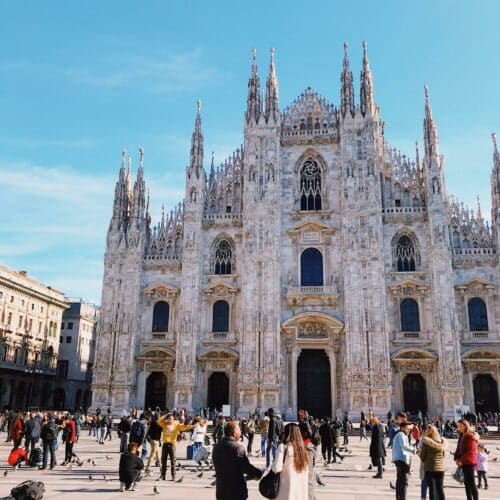[et_pb_section fb_built=”1″ admin_label=”section” _builder_version=”3.22″ global_colors_info=”{}”][et_pb_row admin_label=”row” _builder_version=”3.25″ background_size=”initial” background_position=”top_left” background_repeat=”repeat” global_colors_info=”{}”][et_pb_column type=”4_4″ _builder_version=”3.25″ custom_padding=”|||” global_colors_info=”{}” custom_padding__hover=”|||”][et_pb_text _builder_version=”4.12.1″ _module_preset=”default” global_colors_info=”{}”]
WordPress and SEO go together like peanut butter and jelly.
At Clapping Dog Media we work with many different platforms– Squarespace, Shopify, Wix and others, but WordPress is our favorite.
WordPress is extremely flexible which makes it easy to structure and manage your site in an SEO friendly way.
In this article, we are going to focus on 4 specific things that WordPress developers can do to improve the SEO of a site.
1. Set Up Meta Tags.
Meta Tags are snippets of text that describe what is on a web page. These Meta Tags don’t always appear on the page itself, but within the page source. The primary purpose of meta tags is to help search engines understand what the page is all about.
There are several types of meta tags including: title tags, headline tags (h2, h3, h4), meta descriptions, alt tags for images, etc.
WordPress developers should set up and define the characteristics of the titles and the headline tags.
Title tags are the most important of all meta tags. They have a real and significant impact on how search engines understand your page. The developer should set up the size, font and color of the title tag whereas site owners actually write the titles.
Pro Tip: We prefer the WordPress plugin YOAST to make writing title tags super easy for site owners.
[/et_pb_text][et_pb_image src=”https://clappingdogmedia.com/wp-content/uploads/2021/11/Here-In-YOAST-you-can-custom-write-the-Title-Tag-of-each-page-and-post.png” alt=”Yoast Title Tag” title_text=”Here In YOAST you can custom write the Title Tag of each page and post.” _builder_version=”4.12.1″ _module_preset=”default” global_colors_info=”{}”][/et_pb_image][et_pb_text _builder_version=”4.12.1″ _module_preset=”default” global_colors_info=”{}”]
Title tags are super important because they are crawled first by the Googlebot and they are the first opportunity to tell Google what that page is about.
Headline tags (h2, h3, and h4) are the next most influential meta tags. Search engines read all of the headlines after the title tag and before they read the paragraph content.
Headline tags (h2, h3 and h4) are big, bold lines within the article and they make content easier to read. (hint: this is an h3 tag)
Each article should have multiple lines designated as headlines – the big idea is that users should have a very good idea of what the article is about by only reading the headlines.
Just like the title tags, WordPress developers should define the characteristics of each headline tag.
The headlines should be easy to read and get smaller, h2s should be bigger and bolder than h3s and so on.
Meta descriptions and alt tags do not appear on the front end of a web page, but do help Google understand the content of the page. Each of these tags can easily be defined within the WordPress Admin.
2. Optimize the site for speed.
If 2021 taught us anything, it was that page speed is very important to Google.
Google will put faster websites above slower sites on the search results page.
The #1 result on Google’s organic search results has an average CTR of 31.7% — imagine increasing your visibility by 31%!The difference between the #1 site and the #5 site on the search result page is often times site speed.
WordPress developers have a huge influence on how fast a website loads.
A developer will be able to clean up the code, reduce image sizes, identify and delete unused plugins, optimize the database, and be able to fully test the site for speed.
[/et_pb_text][et_pb_text _builder_version=”4.12.1″ _module_preset=”default” global_colors_info=”{}”]
3. Implement responsive design (mobile is everything).
We are in a mobile-first world.
Responsive design or mobile first design is a way of organizing the content on your website so that it can dynamically respond to the size of the screen it appears on. This means the user experience is just as good on a smartphone as it would be on a laptop.
In March 2021, Google switched all websites from desktop-first to mobile-first indexing.To be very clear, any website must perform brilliantly on every mobile device.
From a build perspective, WordPress developers have a lot of control for mobile responsiveness.
Developers should:
- Optimize Images: Automatically detect the screen size of the device to create, cache and deliver the right sized image.
- Reduce HTTP requests: Minimize the amount of CSS and Javascript code needed and cache everything else.
- Conditionally load assets: Large assets look great on large devices but don’t affect the experience on smaller devices; hence, a developer should plan out the design and only load what is necessary for each device.
[/et_pb_text][et_pb_text _builder_version=”4.12.1″ _module_preset=”default” global_colors_info=”{}”]
4. Install and set up an SEO plugin.
An SEO plugin is important because it will efficiently create xml sitemaps, robots files and will configure the site for search engines. WordPress developers should install and do the basic setup of the SEO plugin.
As we mentioned before, our favorite SEO Plugin for WordPress is YOAST our second favorite plugin is RankMath.
YOAST Basic Setup
- Walk through the Configuration Wizard. The configuration wizard allows you to define some of the most important settings for a site like defining whether the site is for an organization or a person for the Google Knowledge Graph. The knowledge graph is that super-helpful area on the right-hand side of a search results page that defines all sorts of things about the site. Look at all of the data in the knowledge graph below for Starbucks.
[/et_pb_text][et_pb_image src=”https://clappingdogmedia.com/wp-content/uploads/2021/11/Here-In-YOAST-you-can-custom-write-the-Title-Tag-of-each-page-and-post.-2.png” alt=”Knowledge Graph” title_text=”Knowledge Graph” _builder_version=”4.12.1″ _module_preset=”default” global_colors_info=”{}”][/et_pb_image][et_pb_text admin_label=”Text” _builder_version=”4.12.1″ _module_preset=”default” global_colors_info=”{}”]
- Set up the taxonomies. One of the biggest mistakes we see in the set up of Yoast is that tags are indexed. This is a huge mistake because tags can cause duplicate content when they are searched. The easiest way to avoid this is to use Yoast to tell Google not to crawl tags.
SEO > Search Appearance > Taxonomies > Tags > toggle off
[/et_pb_text][et_pb_image src=”https://clappingdogmedia.com/wp-content/uploads/2021/11/Screen-Shot-2021-11-28-at-10.10.26-AM.png” alt=”Tags in Yoast” title_text=”Yoast Tags” admin_label=”Image” _builder_version=”4.12.1″ _module_preset=”default” global_colors_info=”{}”][/et_pb_image][et_pb_text _builder_version=”4.12.1″ _module_preset=”default” global_colors_info=”{}”]
- Turn on XML Sitemaps. The default is to be On, but be sure to check that Yoast will create XML Sitemaps.
- SEO > General > XML Sitemaps > ON
WordPress allows users to create an SEO friendly site because it is flexible and easy to set up. There are very specific things that an experienced WordPress developer will build into the site to make it easier to crawl and faster.
But it is important to understand that selecting WordPress as the platform is the first step in building a SEO healthy site. When a well-developed site is supported with a well-defined SEO strategy, the result is an increase in organic traffic.
[/et_pb_text][/et_pb_column][/et_pb_row][/et_pb_section]





